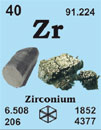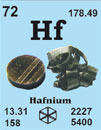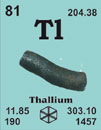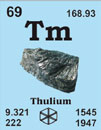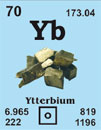Rhodium 45Rh102.905
Discovered in 1803 by W.H. Wollaston at London, England.
[Greek, rhodon = rose]
French: rhodium
German: Rhodium
Italian: rodio
Spanish: rodio
Description: Rhodium is a rare, lustrous, silvery, hard metal of the so-called platinum group. It is unaffected by air and water up to 875 K, and unaffected by acids, but is attacked by molten alkalis. Rhodium is used as a catalyst.
Rhodium single crystal properties
| State: |
single crystal |
|---|
| Crystal structure: |
fcc |
|---|
| Production method: |
Floating Zone |
|---|
| Standard size: |
diameter 6-10mm
thickness 1-2mm |
|---|
| Orientation: |
(100), (110) and (111) |
|---|
| Orientation accuracy: |
<2°, <1°, <0.4° or <0.1° |
|---|
| Polishing: |
as cut, one or two sides polished |
|---|
| Roughness of surface: |
<0.03µm |
|---|
| Purity: |
99.99% |
|---|
| Typical analysis (ppm): |
C 3
H < 1
O 9
N < 5
Cu 1.60
Fe 1.80
Ni < 1
Pb 0.30
Si 0.30
Ga, Hf and Ta are below the detection limit
|
|---|
Materials properties
| Density: |
12.4 g/cm3 |
|---|
| Melting point: |
1965.85 °C / 2239 °K |
|---|
| Boiling point: |
3726.85 °C / 4000 °K |
|---|
| Molar volume: |
8.29 cm3 |
|---|
| Thermal conductivity: |
150 [300 K] Wm-1K-1 |
|---|
| Coefficient of linear thermal expansion: |
8.40 x 10-6 K-1 |
|---|
| Electrical resistivity: |
4.51x 10-8 [293 K] Wm |
|---|
| Mass magnetic susceptibility: |
+1.36 x 10-8(s) kg-1m3 |
|---|
| Young's modulus: |
379 GPa |
|---|
| Rigidity modulus: |
147 GPa |
|---|
| Bulk modulus: |
276 GPa |
|---|
| Poisson's ratio: |
0.26 |
|---|
| Radii: |
Rh4+ 67; Rh3+ 75; Rh2+ 86; atomic 134; covalent 12 |
|---|
| Electronegativity: |
2.28 (Pauling); 1.45 (Allred); 4.30 eV (absolute) |
|---|
| Effective nuclear charge: |
3.90 (Slater); 7.64 (Clementi); 10.85 (Froese-Fischer) |
|---|
| Number of Isotopes (incl. nuclear isomers): |
34 |
|---|
| Issotope mass range: |
94m -> 112 |
|---|
| Crystal structure, (cell dimentions / pm), space group |
fcc |
|---|
| X-ray diffraction: mass absorption coefficients: |
CuKα 194 (µ/r) / cm2g-1
MoKα 22.6 (µ/r) / cm2g-1 |
|---|
| Neutron scattering length: |
0.588 b/10-12 cm |
|---|
| Thermal neutron capture cross-section: |
144.8 sa / barns |
|---|
Biological data
| Biological role: |
none |
|---|
| Toxicity |
|
|---|
| Toxic intake: |
most rhodium compounds are slightly toxic by ingestion. |
|---|
| Lethal intake: |
LD50 (RhCl3, ortal, rat)= 12.6 mg kg-1 |
|---|
| Hazards: |
There are few reported cases of humans being affected by rhodium, but it is an experimental carcinogen. |
|---|
| Level in humans |
|
|---|
| Blood: |
|
|---|
| Bone: |
|
|---|
| Liver: |
|
|---|
| Muscle: |
|
|---|
| Daily dietary intake: |
n.a. |
|---|
| Total mass of element in average [70 kg] person: |
n.a. |
|---|
Geological data
| Mineral | Formula | Density | Hardness | Crystal apperance |
|---|
| Rhodium |
Rh |
c. 12 |
3.5 |
cub., met. white |
|---|
| Rhodplumsite |
Ph3Pb2S2 |
9.74 |
n.a. |
rhom., met. cream-pink/grey-blue |
|---|
| Chief ore: |
native rhodium is found in Montana, USA; certain copper and nickel ores contain up to 0.1% rhodium a |
|---|
| World production: |
3 tonnes/year |
|---|
| Main mining areas: |
see copper and nickel |
|---|
| Reserves: |
n.a. |
|---|
| Specimen: |
available as foil, sponge or wire. Safe. |
|---|
| Abundances |
|
|---|
| Sun: |
25.1 (relative to H = 1 x 1012) |
|---|
| Earth's crust: |
2 x 10-4 p.p.m. |
|---|
| Seawater: |
|
|---|
| Residence time: |
|
|---|
| Classification: |
|
|---|
| Oxidation state: |
|
|---|
Source: Emsley, J. (1998) The Elements (3rd Edition)

 English
English
 Deutsch
Deutsch
